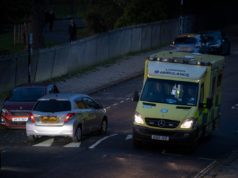The experiments are testing how drones could be used to fly LTE cells into the skies to rebuild cellular networks when disaster strikes.
After a severe weather emergency, airborne drones carrying LTE network equipment could be used in the future to help restore cellular phone services for first responders and emergency workers in hard-hit communities under a program being tested by Verizon Wireless.
Verizon’s Airborne LTE Operations (ALO) initiative, which has been undergoing tests for two years, conducted several controlled trials in New Jersey from Oct. 5-6 using large 300-pound drones with 17-foot wingspans to carry LTE cellular equipment into the skies, the company announced on Oct. 6. The tests were aimed at learning about how such unmanned drones could be used to create an in-flight cellular network to replace traditional network gear that might be damaged in storms.
The New Jersey ALO tests were conducted with Verizon partner American Aerospace Technologies Inc. (AATI), which operated the large drones and collected test data for future analysis, according to Verizon.
Howard Waterman, a Verizon spokesman, told eWEEK that the drones were packed with LTE network gear and flown to see how large a coverage area could be established. In addition, the experiments also tested how such systems could be used to create all-new airborne networks if existing ground-based systems were temporarily knocked out by severe weather or natural disasters, and how the drones could also boost ground-based systems that remained in service.
“The tests were all in the spirit of helping out as part of an emergency response,” said Waterman. The experiments were Verizon’s first tests of the technology so far in a mock emergency setting, he added.
The data from the two days of testing will now be evaluated and supplemented by a “lessons learned” analysis as the company looks to refine and build on the drone-based system, he said.
“We’re looking at the data that we were able to capture, and there will be more to come on that front,” said Waterman. “We have been looking at something like this over the last two years.”
Such a system could be a huge boon to emergency workers when hurricanes, floods, tornadoes and other severe weather events knock out cellular phone services in local communities. By bringing in LTE-filled drones, mobile carriers could restore cellular services where needed.
“This latest trial demonstrated how emerging technology combined with wireless networks can improve safety and security,” Mike Haberman, vice president of Verizon’s network operations, said in a statement. “A nationwide reliable 4G LTE network is the foundation for the future of mobile [internet of things] in the air.”
Following earlier successful tests of the system, Verizon had deemed its 4G LTE 700MHz network safe for in-flight wireless connectivity, which led to the creation of device and service requirements as part of Verizon’s ALO initiative, the company said. Verizon’s network team began work to develop the technology for in-flight LTE operations in 2014.
Additional tests of the drones and LTE gear will be conducted after the Federal Aviation Administration sets up regulations that will allow drone operations beyond the visual line of sight of operators, according to Verizon.
In July, AT&T showed at a conference how it is using drones to perform aerial inspections of cell towers, which will lead to improved service to customers by enabling AT&T to more quickly make changes to the network, according to an earlier eWEEK story.







